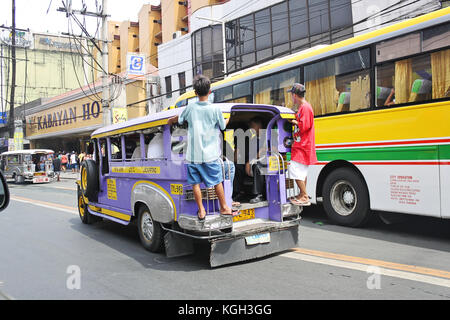Just How Transit Advertising Can Change Public Transport Spaces Into Dynamic Marketing Operatings Systems
Transit advertising and marketing holds substantial possibility to redefine public transportation spaces right into vivid advertising and marketing platforms that engage and inform. As we check out the diverse benefits and advancing strategies of transit advertising, it raises the question of exactly how this change can redefine our communications with both brand names and the city setting.
Advantages of Transit Advertising And Marketing

In addition, transportation advertising is very economical compared to traditional media. It permits advertisers to attain high impacts at lower costs, maximizing roi. The captive target market of commuters supplies an opportunity for brand names to convey their messages to people who are usually responsive throughout their travel times.
Furthermore, the vibrant nature of transit advertising and marketing allows projects to be updated often, ensuring that messaging continues to be appropriate and prompt. This versatility can be crucial in reacting to market trends or advertising events, maintaining the brand top-of-mind for customers. Lastly, the pervasive visibility of transit advertising and marketing adds to brand name recall; repeated exposure within acquainted traveling contexts reinforces brand name recognition and promotes customer commitment, ultimately driving sales and boosting brand name track record.
Kinds Of Transit Advertising And Marketing
Public transport systems give various styles for advertising, each providing to various marketing methods and target market engagement techniques. One popular kind is exterior bus and train wraps, which cover the entire vehicle and produce a mobile signboard effect, enabling high visibility in city settings. These wraps can catch interest as they go across hectic roads, reaching a diverse target market.
An additional preferred style is indoor marketing, that includes posters, digital screens, and advertisements on transportation seats. These placements engage passengers throughout their trip, enhancing brand messaging in a restricted space. Digital presents, specifically, use the advantage of dynamic web content, making it possible for marketers to update messages in real-time.
Station advertising and marketing is likewise considerable, featuring posters, banners, and interactive stands within transportation stations. These advertisements take advantage of foot web traffic and can target specific demographics based upon place.
Lastly, promotional collaborations with transit authorities can lead to one-of-a-kind campaigns, such as themed transportation experiences or occasions, enhancing the total interaction with commuters. Each type of transportation marketing offers distinctive benefits, permitting brand names to tailor their strategy to successfully reach their target audience within the general public transportation ecosystem.
Involving Travelers Efficiently
Commuters are progressively inundated with advertising and marketing messages during their daily trips, making it crucial for brand names to engage them in cutting-edge means. To capture interest in this congested room, advertisers have to focus on creativity and significance. Utilizing eye-catching visuals and succinct messaging can substantially improve the likelihood of interaction.
Interactive components, such as QR codes or augmented truth attributes, can also More Bonuses change fixed ads into immersive experiences, promoting a deeper link with the audience. Brands must concentrate on attending to travelers' interests and requirements, customizing messages to resonate with their lifestyle, whether with promos for local companies or solutions designed to improve their travelling experience.
Moreover, timing plays an important duty; purposefully placing ads during top commuting hours can take full advantage of presence and effect. Engaging commuters successfully additionally entails important source leveraging social media sites integration, allowing passengers to share their promotions or experiences directly from transit platforms, thereby amplifying brand reach.
Fundamentally, reliable involvement pivots on recognizing the traveler journey and producing compelling, interactive, and relevant advertising experiences that not only record focus however likewise drive activity and loyalty. By doing so, brands can change public transportation into a dynamic advertising and marketing platform that resonates with its audience.

Measuring Advertising Impact
How can brand names precisely evaluate the effectiveness of their ad campaign in transit environments? Gauging the effect of transit advertising and marketing needs a multifaceted approach that incorporates quantitative and qualitative metrics. One common method is tracking involvement with mobile analytics, where brands can assess foot web traffic patterns and application communications before, throughout, and after campaigns.
Studies can offer beneficial insights right into brand recall and customer belief, allowing brand names to gauge exactly how well their messages resonate with travelers. Additionally, keeping an eye on social media involvement related to details campaigns can expose shifts in public understanding and brand name discussion.

Furthermore, working together with transportation agencies can improve dimension precision, as they frequently have thorough demographic data on ridership patterns. By incorporating these methodologies, brands can establish a thorough understanding of their advertising effectiveness, making sure that their projects not just get to yet also impact their target audiences successfully.
Future Fads in Transportation Advertising And Marketing
A significant shift is anticipated in transit advertising as technological developments and altering consumer habits reshape the landscape. Transit Advertising Philippines. The integration of interactive media and digital screens is expected to enhance engagement, allowing brand names to supply vibrant material that resonates with diverse audiences. As public transport systems welcome clever modern technology, marketers will leverage real-time data analytics to customize messages based upon traveler demographics and behaviors
Moreover, augmented fact (AR) is positioned to transform the way commuters connect with ads. By offering immersive experiences, AR can transform an ordinary trip into an engaging story that catches attention and cultivates brand name loyalty. This innovation will likely urge advertisers to create even more experiential campaigns that drive customer interaction.
Sustainability is another essential pattern influencing transportation marketing. As environmental awareness grows, brand names will progressively look for to line up with environmentally friendly techniques, using sustainable products and promoting eco-friendly initiatives within their projects.
Conclusion
In final their website thought, transportation advertising and marketing offers significant advantages by improving brand name presence and involving a captive audience. As patterns progress, the possibility for cutting-edge communications in between commuters and brands is poised to grow, ensuring that transit advertising remains an important element of contemporary advertising methods.
Transit marketing holds considerable capacity to redefine public transportation spaces into vibrant advertising platforms that educate and involve. The prevalent existence of transit advertising contributes to brand name recall; duplicated direct exposure within acquainted travel contexts reinforces brand recognition and cultivates customer loyalty, ultimately driving sales and enhancing brand name online reputation.
Just how can brand names precisely evaluate the effectiveness of their advertising projects in transit environments?In verdict, transportation advertising and marketing provides significant benefits by boosting brand visibility and involving a restricted audience. Transit Advertising Philippines. As trends advance, the capacity for ingenious interactions in between brand names and commuters is poised to expand, making sure that transit advertising and marketing continues to be an important component of modern-day advertising and marketing methods